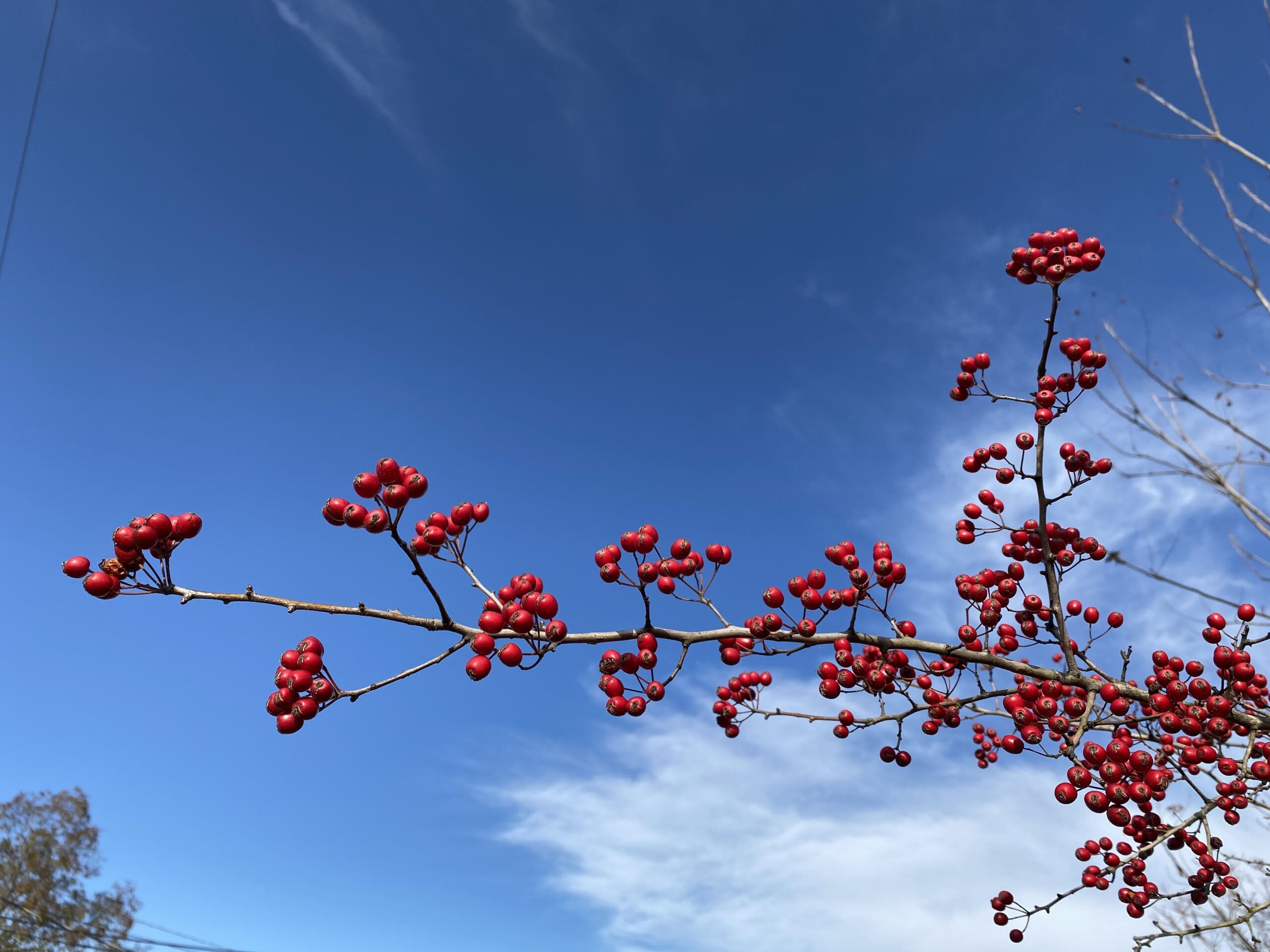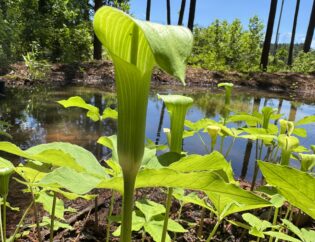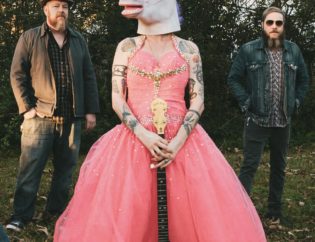
This original post was written by Jeff Killingsworth, 2012. Post updated with additional information and pictures by Pandra, 2024.
The title says it all really. Most birds do not migrate to warmer climes in the winter, and as freezing temperatures roll in, food gets scarce. A very important food source for birds during these lean months are the nuts and berries that remain on certain plants well into winter. The following list highlights some of the more common genera and species of trees and shrubs that provide food, and often shelter, for birds during the short, dark, days of winter.
One of the most familiar and noticeable plants with winter persistent berries is the Holly tree (Ilex spp.). Most people have seen the bright red berries that stand in stark contrast to the waxy green leaves into the dead of winter. Both the leaves and berries provide a great bit of color in the stark winter landscape, but they also provide excellent food and cover for birds.

There are a few species in this genus that are deciduous, but still have plentiful berries even after the leaves fall off. Ilex decidua, and Ilex verticillata are both deciduous and have red berries. Ilex glabra, and Ilex vomitoria have blackish berries, and are evergreen.

Chokecherry (Aronia spp., pictured above) is another shrub that retains its berries into winter, even after the leaves have long since fallen and become mulch. Pandra has a Red Chokecherry in her front yard and the birds usually come and clean it off sometime in January or February, often in the span of one day. Here it is laden with fruit on a chilly, icy January day.

Most blueberries have fruit that ripens in late spring through mid summer. However, Sparkleberry, Vaccinium arboreum, is a tall, slow-growing blue berry species that has brilliant red winter leaf color, and large crop of black berries that stay on through winter's coldest days.

Parsleyleaf Hawthorn (Crataegus marshallii) has plentiful winter persistent fruit and thorny branches that provide great cover for birds. There are over 100 species of Hawthorns in the US; many species' fruits ripen in the summer. Hawthorn fruits were eaten by both Native peoples and colonists.
Eastern Juniper (Juniperus virginiana) aka Eastern Red Cedar has large pale blue berries that last into winter, and since it is evergreen it provides cover and nesting sites for birds as well. Cedar Waxwings often take advantage of a Red Cedar’s berry buffet during their spring migration north.

Several species of Sumac (Rhus spp.) have abundant red berries that last well into winter.
Crabapple (Malus spp.) trees have small fruits that add vibrant color to the winter landscape, as well as feed numerous species of birds.









